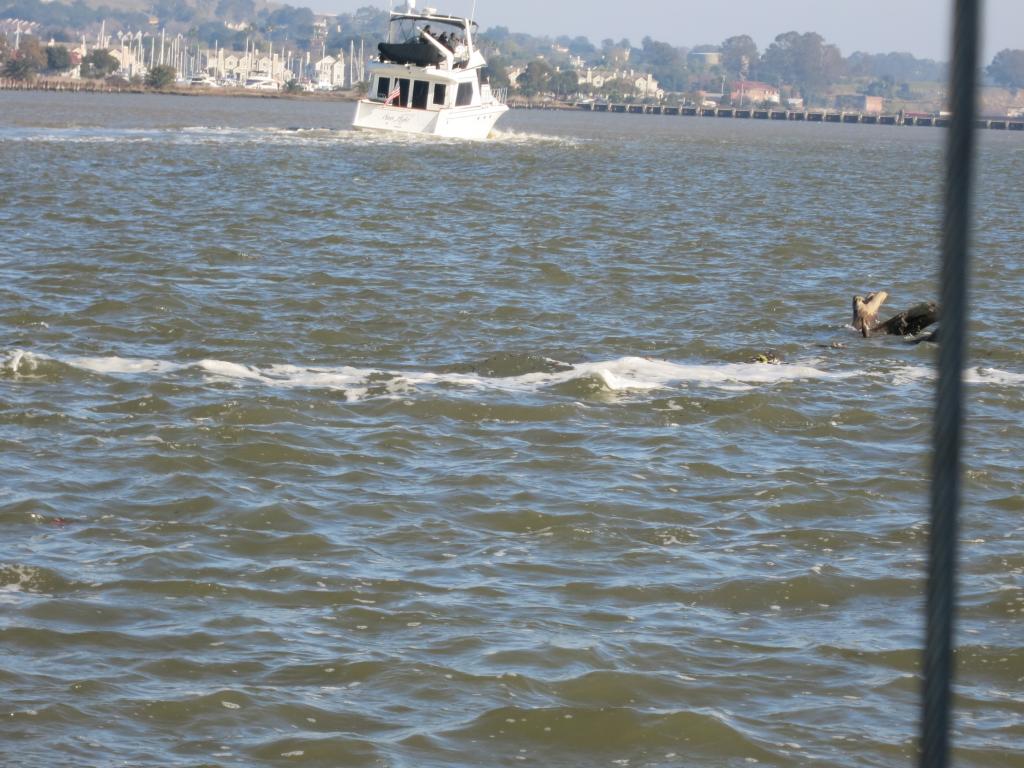You are using an out of date browser. It may not display this or other websites correctly.
You should upgrade or use an alternative browser.
You should upgrade or use an alternative browser.
Camera
- Thread starter porman
- Start date
The friendliest place on the web for anyone who enjoys boating.
If you have answers, please help by responding to the unanswered posts.
If you have answers, please help by responding to the unanswered posts.
stubones99
Guru
Ok - so is it that most of this type of camera have IR LEDs? So it's easily available?
Visible light LEDs are also low power - and have the advantage that you can see what's illuminated as well as the camera.
Given a choice I'd want visible light LEDs. Am I missing something?
Richard
The problem with visible light LED's on a camera would be like leaving a flashlight on in the engine room. It lights what the camera sees, not the rest of the engine room. More than likely, it would simply be in your eyes most of the time.
You probably have more even lighting on your engine room with other types of light.
stubones99
Guru
for me, resolution is king.
seeing the problem when small is key.
so whichever lighting does better overall...
Resolution is a factor of the sensor, not the lighting. Most analog CIF cameras are fairly low resolution since they are not digital sensors. If you have power and a BNC connector to the camera, it is an analog CIF camera.
On the other hand, most IP cameras are far higher resolution than an analog CIF camera. IP cameras can be wifi or wired with Ethernet, and often Power over Ethernet (POE), so your power supply can power several cameras from one source. On a POE powered IP camera, you can have 5-6 megapixel sensors and that gets you the resolution you want. The current mobotix Q25 has a 6 mp camera. The image I uploaded was a scaled down Q12 (older version) with a 3mp camera. It is small (50mm deep by 160) and either recessed or surface mounted. On the surface mounted version, it can see 180 degrees (within 2 inches of the ceiling) and 360 degrees around. You can designate virtual views, fuel filters, engine gauges, inverter displays, etc., all from the same camera. The on-board computer takes the fish-eye camera image and straightens it out and lets you select different display formats.
It looks like a smoke alarm with a lens in the center.
It is a very nice high rez 360 degree camera.
stubones99
Guru
Here is an open Q25 mobotix camera.
http://74.93.193.38:9001/cgi-bin/guestimage.html
http://74.93.193.38:9001/cgi-bin/guestimage.html
ksanders
Moderator Emeritus
Resolution is a factor of the sensor, not the lighting. Most analog CIF cameras are fairly low resolution since they are not digital sensors. If you have power and a BNC connector to the camera, it is an analog CIF camera.
On the other hand, most IP cameras are far higher resolution than an analog CIF camera. IP cameras can be wifi or wired with Ethernet, and often Power over Ethernet (POE), so your power supply can power several cameras from one source. On a POE powered IP camera, you can have 5-6 megapixel sensors and that gets you the resolution you want. The current mobotix Q25 has a 6 mp camera. The image I uploaded was a scaled down Q12 (older version) with a 3mp camera. It is small (50mm deep by 160) and either recessed or surface mounted. On the surface mounted version, it can see 180 degrees (within 2 inches of the ceiling) and 360 degrees around. You can designate virtual views, fuel filters, engine gauges, inverter displays, etc., all from the same camera. The on-board computer takes the fish-eye camera image and straightens it out and lets you select different display formats.
It looks like a smoke alarm with a lens in the center.
It is a very nice high rez 360 degree camera.
For $79 each I have 480P resolution, as you know the same as a normal TV signal.
Thats plenty of resolution.
All my cameras on the boat (and at my business) are WIFI enabled. POE is OK, but I have power available in more places than wired ethernet, so I went with WIFI.
Last edited:
markpierce
Master and Commander
- Joined
- Sep 25, 2010
- Messages
- 12,557
- Location
- USA
- Vessel Name
- Carquinez Coot
- Vessel Make
- penultimate Seahorse Marine Coot hull #6
stubones99
Guru
Low light performance is affected by the size of the sensor. A camera with a 1/2" sensor can give you a good image in very low light but cell phones can't do a decent image without a 'flash'. Their tiny cell cameras have such a small aperture that they don't let much light in, and therefore, require lots of light for a decent image.
Simi 60
Guru
- Joined
- Jul 1, 2016
- Messages
- 5,482
- Location
- Australia
- Vessel Make
- Milkraft 60 converted timber prawn trawler
$80 ebay reversing camera x 2 in engine room.
http://www.ebay.com.au/itm/2x-IR-18...573740?hash=item281b693dac:g:d8cAAOSwbYZXdN39
IR and lights on image here
Moonshine : Big Brother Is Watching
http://www.ebay.com.au/itm/2x-IR-18...573740?hash=item281b693dac:g:d8cAAOSwbYZXdN39
IR and lights on image here
Moonshine : Big Brother Is Watching
Last edited:
Similar threads
- Replies
- 15
- Views
- 2K
- Replies
- 5
- Views
- 1K
- Replies
- 3
- Views
- 628
- Replies
- 13
- Views
- 750

